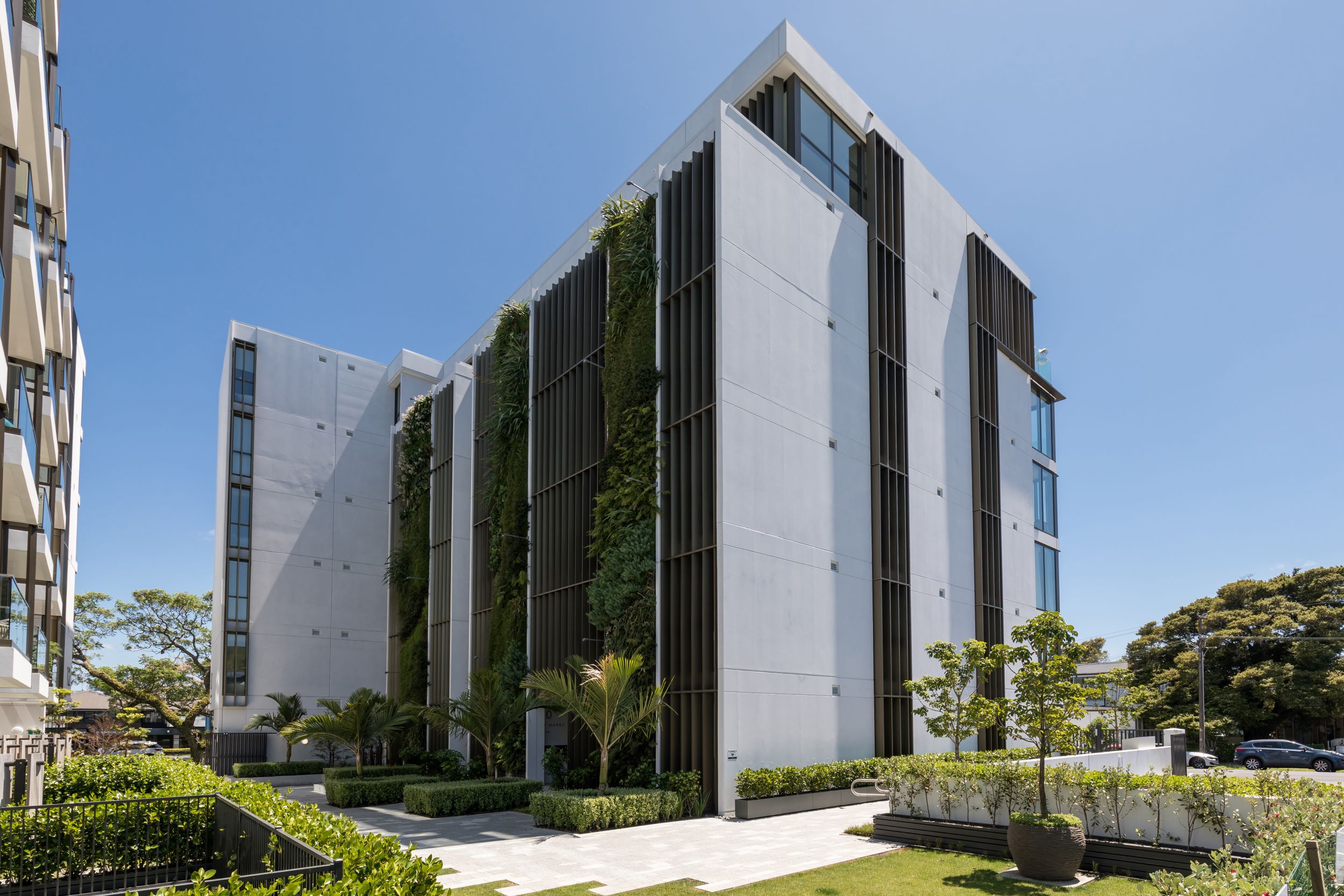As technologies advance and the effects of climate change become a reality, the building industry is looking towards a myriad of options to offset carbon emissions and welcome biodiversity back to our cities.
Graham Cleary, founder of Natural Habitats, is a pioneer in this space leading the charge to turn our cityscapes into lush urban spaces.
For Natural Habitats founder Graham Cleary, the key benefit of green walls and roofs is simple: happiness.
It’s that belief and a clear-cut notion of the immense and wide-ranging benefits of introducing more greenery into our cities that drives Graham and his team to continue to innovate and disrupt urban design in Aotearoa.

Research has repeatedly shown that contact with nature enhances general wellbeing; people with access to natural settings are healthier overall and have increased levels of life satisfaction, Graham explains. However, as high-density housing in our cities becomes the norm, private gardens are shrinking, and with that, so too are the benefits to our well-being and environment.
Living walls (also referred to as green facades or green walls) are created with multiple small pockets of growing space in or on the wall, allowing for a range of plants to grow from a vertical surface. A green roof, as the name suggests, does the same except on a horizontal plane.
Green roofs can be designed in multiple ways, with the key types known as intensive, semi-intensive and extensive, each of which requires different levels of structural support, substrate depths and irrigation systems to accommodate anything from small shrubs and grasses to mature trees. Generally, the most affordable option, and easiest to maintain, is an extensive living roof, which is generally designed to accommodate small succulents, grasses and moss.
Overseas, where high-density housing is more familiar, local authorities are incentivising green architecture in private buildings. In 2017, Barcelona City Council launched a competition for 10 winning proposals to receive a grant of 75% of the cost of a green roof, which generated 4,000 square metres of lush rooftop gardens. The Singaporean government has supported the industry since 2009, offering financial incentives to those incorporating green architecture in both existing and new buildings, subsidising up to 50% of the installation costs. However, in New Zealand, we are trailing behind, Graham explains.

The Guardian recently reported that air pollution shortens lives more than any other external cause, above smoking and car crashes. “Green walls and roofs have the ability to mitigate air pollution and improve air quality, as well as reduce urban noise, absorb carbon emissions, and decrease energy consumption.
“Despite the plea from our government to cut greenhouse gas emissions from the building industry, we do not yet have financial support to do so. Words are cheap. We have to do a lot more simple, practical things,” says Graham.
And that’s exactly what Natural Habitats is doing, with more and more exemplary examples of green walls and roofs starting to pop up in our cities.
The brief for the green wall at St Mark’s Apartments in Remuera, Auckland, was to add visual appeal for residents. The completed project is New Zealand’s tallest green wall, with more than 5000 predominantly native plants spanning an area of more than 110 square metres over five storeys. “They provide a wonderful visual appeal for the residents: rather than looking at concrete they enjoy an ever-changing landscape of colour.”
“Green roofs provide all the same benefits as green walls but an important additional benefit is their contribution to stormwater management, due to the plants natural process of retaining and filtering a range of pollutants before slowly releasing the water to council pipes. An extension of green roofs around the country would prevent the need to replace the aging stormwater network. Beaches wouldn’t get as polluted as they do, so we’ll be able to enjoy our local shores year-round.”

As green walls and roofs are gaining popularity in commercial builds, Graham says their popularity in residential homes is also on the rise. A green roof by Natural Habitats borders the upstairs passageway of the 2021 City Home of the Year, House on Takapuna Beach by CAAHT Studio Architects, contributing to the protection of its surroundings.
Due to the flexibility and nature of green walls, they are generally possible to create in most settings, although it is harder to add a green wall to an existing home, but not impossible, Graham says. Green walls are also making their way indoors, particularly in apartments and offices where outside space is sparse, or absent, enriching the occupants’ connection to the natural world.
Living architecture is here, slowly creating a tapestry of small but thriving ecosystems within our cities – one project at a time.




